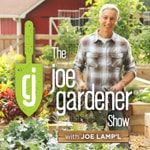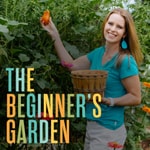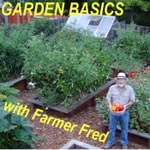Food Garden Life Show: Helping You Harvest More from Your Edible Garden, Vegetable Garden, and Edible Landscaping – Details, episodes & analysis
Podcast details
Technical and general information from the podcast's RSS feed.

Food Garden Life Show: Helping You Harvest More from Your Edible Garden, Vegetable Garden, and Edible Landscaping
Steven Biggs: Horticulturist and edible landscaping expert.
Frequency: 1 episode/9d. Total Eps: 245

Recent rankings
Latest chart positions across Apple Podcasts and Spotify rankings.
Apple Podcasts
🇨🇦 Canada - homeAndGarden
30/07/2025#45🇨🇦 Canada - homeAndGarden
29/07/2025#14🇨🇦 Canada - homeAndGarden
28/07/2025#15🇨🇦 Canada - leisure
28/07/2025#82🇨🇦 Canada - homeAndGarden
27/07/2025#22🇨🇦 Canada - homeAndGarden
26/07/2025#32🇨🇦 Canada - homeAndGarden
25/07/2025#19🇺🇸 USA - homeAndGarden
21/07/2025#73🇨🇦 Canada - homeAndGarden
20/07/2025#86🇨🇦 Canada - homeAndGarden
19/07/2025#87
Spotify
No recent rankings available
Shared links between episodes and podcasts
Links found in episode descriptions and other podcasts that share them.
See all- https://www.epicgardening.com/
534 shares
RSS feed quality and score
Technical evaluation of the podcast's RSS feed quality and structure.
See allScore global : 73%
Publication history
Monthly episode publishing history over the past years.
Too Cold for Tender Fruit? Hear What this Prairie Grower Does
Season 7 · Episode 23
jeudi 6 juin 2024 • Duration 32:52
How to Grow Figs. Live online class. June 23, 2025. Find out more.
***
Think your climate is too cold to grow tender fruit?
Find out how this grower harvests peaches, plums, cherries, apricots, and more…despite winter temperatures that can dip to -38°C (-36°F) and a short summer.
In this episode, Donna and Steven chat with Saskatchewan fruit grower Dean Kreutzer.
We talk about:
- Fruit adapted to cold climates
- Using unheated greenhouses to grow tender fruit, grapes…and figs
- Heat sinks and insulated tarps
- Capturing heat from the ground—without an elaborate geothermal heating system
Kreutzer and his wife run Over the Hill Orchards in Saskatchewan.
If you’re looking for more on cold-hardy fruit, check out this post on Saskatoon Berries.
***
-->Join the 5,000+ gardeners in The Food Garden Gang who stay on top of home food-growing ideas with our weekly e-mail. We’re making the world a better place one garden at a time!
-->Grab the free e-books: Small-Space Food-Gardening Hacks and Growing Figs in Cold Climates.
-->And say hi—we love to hear what you think!
***
- Join the 5,000+ gardeners in The Food Garden Gang who stay on top of home food-growing ideas with our weekly e-mail. We’re making the world a better place one garden at a time!
- Grab the free e-books: Small-Space Food-Gardening Hacks and Growing Figs in Cold Climates.
Not Enough Space? Fit in More Crops With These Ideas
Season 7 · Episode 22
jeudi 30 mai 2024 • Duration 21:44
How to Grow Figs. Live online class. June 23, 2025. Find out more.
***
Do you have more seeds and plants than you can fit into your garden?
It’s a common problem for the enthusiastic food gardener!
In this episode, Donna and Steven talk about finding more growing space so that you can fit more crops into the same space.
Get ideas for:
- Growing in ungardenable spaces…like the root-infested space next to hedges
- Reducing space used by pathways
- Tiering crops in a garden
- Using paved areas, decks—and stairs!
If you’re looking for more on garden planning, check out these 7 vegetable garden layout ideas.
***
-->Join the 5,000+ gardeners in The Food Garden Gang who stay on top of home food-growing ideas with our weekly e-mail. We’re making the world a better place one garden at a time!
-->Grab the free e-books: Small-Space Food-Gardening Hacks and Growing Figs in Cold Climates.
-->And say hi—we love to hear what you think!
***
- Join the 5,000+ gardeners in The Food Garden Gang who stay on top of home food-growing ideas with our weekly e-mail. We’re making the world a better place one garden at a time!
- Grab the free e-books: Small-Space Food-Gardening Hacks and Growing Figs in Cold Climates.
Is Your Soil in Overdraft? Find Out How to Amend Soil
Season 7 · Episode 13
jeudi 28 mars 2024 • Duration 39:00
How to Grow Figs. Live online class. June 23, 2025. Find out more.
***
When you make only withdrawals—no deposits—you eventually end up in overdraft. It works that way at the bank, with friendships—and with soil.
And growing crop after crop in a garden is like making withdrawal after withdrawal. The crops use nutrients. Working the soil affects its structure.
Amending soil is like putting money back into the bank. Soil amendments can improve soil structure, soil chemistry, and return nutrients to the soil.
In this episode, Donna and Steven talk about practical ways home gardeners can improve soil quality with soil amendments.
We discuss different types of manures, making compost, using leaves, wood chips, and common products such as bone meal, peat moss, and blood meal.
If you’re looking for more on soil, check out this post about how and when to use wood ash in the garden.
***
- Join the 5,000+ gardeners in The Food Garden Gang who stay on top of home food-growing ideas with our weekly e-mail. We’re making the world a better place one garden at a time!
- Grab the free e-books: Small-Space Food-Gardening Hacks and Growing Figs in Cold Climates.
Making Change One Garden at a Time
Season 4 · Episode 48
jeudi 2 décembre 2021 • Duration 01:03:21
How to Grow Figs. Live online class. June 23, 2025. Find out more.
***
Grow Now
Emily Murphy believes individual gardeners doing small things can add up to big change.
Murphy is a garden designer, educator, and author with a background that includes botany, ethnobotany, environmental science, and ecology. It gives her a unique vantage point to teach people about gardening and the environment.
Murphy is the creator of the website passthepistil.com, and author of Grow What You Love, 12 Food Plant Families to Change Your Life.
Her new book is Grow Now: How we can save our health, communities, and plant – one garden at a time. In it, Murphy looks at how individual gardeners can make change positive change in the world.
Green Thumbs Growing Kids
Sunday Harrison gets city kids gardening. She’s with Green Thumbs Growing Kids, which gives hands-on garden and food education to urban school kids.
Along with school gardens, she talks about microgreens, a fast maturing crop for kids. And a new project is kids growing trees from seed — trees that will line Toronto streets.
Since Harrison joined us on the show a year ago to talk about school gardens, demand for school gardens has been huge.
***
- Join the 5,000+ gardeners in The Food Garden Gang who stay on top of home food-growing ideas with our weekly e-mail. We’re making the world a better place one garden at a time!
- Grab the free e-books: Small-Space Food-Gardening Hacks and Growing Figs in Cold Climates.
Food-Focused Homestead Life
Season 4 · Episode 47
jeudi 25 novembre 2021 • Duration 45:33
How to Grow Figs. Live online class. June 23, 2025. Find out more.
***
Have you ever thought of changing your relationship with food?
Gary Dickenson put food front and centre in his new life as a homesteader. He tells us about his move from a seaside town in the UK, where he worked in marketing, to a remote corner of northern Latvia.
Dickenson says that the thing he best likes about homesteading life is the freedom it offers him.
Busy Homestead
It’s a busy homestead. Projects include:
- Greenhouses
- Smoking food
- Canning
- Wood heating
- Maple syrup
- Hugelkultur
- No-Till veg plots
***
- Join the 5,000+ gardeners in The Food Garden Gang who stay on top of home food-growing ideas with our weekly e-mail. We’re making the world a better place one garden at a time!
- Grab the free e-books: Small-Space Food-Gardening Hacks and Growing Figs in Cold Climates.
School Food Gardens Open Career Horizons
Season 4 · Episode 46
jeudi 18 novembre 2021 • Duration 33:27
How to Grow Figs. Live online class. June 23, 2025. Find out more.
***
The Wateroo Region School Food Gardens project has built 35 school gardens, touching 20,000 students in this region of Ontario.
Allison Eady, program co-ordinator, explains that it provides information and curriculum ideas to educators, grants for school gardens, and direct programming for youth.
Garden-Based Learning
Eady sees school gardens as an opportunity for teaching more than gardening. She says garden-based lessons can be used for many subjects, including art, math, and science.
Launch a School Garden
“The best chance for success is when there’s a network of people who support it,” says Eady as she talks about successful school gardens.
She says it’s important to find allies in the community, whether it’s organizations or community members. That’s because school populations change fairly quickly: kids (and parents) move on, and staff are shuffled between schools. That makes the stability of community support important for the long-term success of a school garden.
Eady says not to worry about being a garden expert when starting a school garden. “It’s about figuring it all out together,” she says.
Youth Programming
During the COVID pandemic Waterloo Region School Gardens has pivoted to provide more direct programming for youth, including career mentorship and student-run markets.
Another initiative helps youth explore food-related topics of interest to them. Youth research a topic, and then create blog posts or videos to teach other youth, with the support of program staff.
***
- Join the 5,000+ gardeners in The Food Garden Gang who stay on top of home food-growing ideas with our weekly e-mail. We’re making the world a better place one garden at a time!
- Grab the free e-books: Small-Space Food-Gardening Hacks and Growing Figs in Cold Climates.
Virtual Apple Tasting
Season 4 · Episode 45
jeudi 11 novembre 2021 • Duration 41:31
How to Grow Figs. Live online class. June 23, 2025. Find out more.
***
Stop and smell the roses? Community event helps people to stop and smell…apples.
Susan Poizner recently helped 50 Torontonians to stop and smell…apples. Poizner, a fruit-tree-care educator and college instructor with a passion for growing fruit trees, organized a virtual apple-tasting event as a fundraiser for her local community orchard.
Virtual Apple-Tasting Event
Poizner visited an orchard specializing in heirloom apple varieties to get enough apples for 50 participants.
Participants received a paper bag containing the six apple varieties for the tasting. Each was marked with coloured stickers for identification.
To help participants think about what they were tasting, the event was facilitated by an apple sommelier, a researcher specializing in taste perception.
Poizner explains that researchers testing new apple varieties for consumer acceptance might consider upwards of 50 things. For this event, participants were asked to share feedback on four things: overall apple intensity, honey, floral, green-herbaceous.
Apple Varieties
The tasting event took attendees to different parts of the world with six heirloom apple varieties.
***
- Join the 5,000+ gardeners in The Food Garden Gang who stay on top of home food-growing ideas with our weekly e-mail. We’re making the world a better place one garden at a time!
- Grab the free e-books: Small-Space Food-Gardening Hacks and Growing Figs in Cold Climates.
Grow Quince and Garden Journal
Season 4 · Episode 44
jeudi 4 novembre 2021 • Duration 01:00:49
How to Grow Figs. Live online class. June 23, 2025. Find out more.
***
Grow Quince in Cold Climates
Imagine a job that revolved around a plant you’re passionate about. What plant would it be for you?
For Nan Stefanik that plant is quince.
She first tasted quince as an adult, on an overseas trip. After returning home, she was surprised to learn it grew locally in New England.
With a long history of its cultivation in New England, knowledge of quince had receded over time.
#GrowQuince
Stefanik’s business, Vermont Quince, makes quince paste, quince preserves, and other specialty quince products using New-England-grown quince.
Along with food products, she has made it her mission to collect and share quince information.
Using a specialty-crop grant, she started a #GrowQuince campaign to share quince-growing information.
Find more information about how to grow and how to cook quince on the Vermont Quince website.
What’s next? Stefanik and her son have acquired land for a quince education centre where they can combine a shop, demonstrations, and hold scion exchanges.
A fabric showing the different types of quince used in a recent quince taste test.
Toronto & Golden Horseshoe Gardener’s Journal
Our second guest today is also passionate about what she does. Helen Battersby produces the Toronto and Golden Horseshoe Gardener’s Journal.
This year marks the 30th anniversary of the journal, which includes information about frost dates, seed-starting dates, plant and seed sources — and also has space to record garden successes and failures.
There’s a deeply human story behind the journal, the story of a mother helping a son. Battersby shares that story, and talks about what’s new in the 2022 edition.
***
- Join the 5,000+ gardeners in The Food Garden Gang who stay on top of home food-growing ideas with our weekly e-mail. We’re making the world a better place one garden at a time!
- Grab the free e-books: Small-Space Food-Gardening Hacks and Growing Figs in Cold Climates.
Compost Heater Heats a Hot Tub
Season 4 · Episode 43
jeudi 28 octobre 2021 • Duration 30:41
How to Grow Figs. Live online class. June 23, 2025. Find out more.
***
A wood-chip compost pile steams up this hot tub.
Today we visit a Colorado garden at an elevation of 6,500 feet.
Tom Bartels harvests 1,000 pound of fresh produce a year from his 1,300-square-foot garden, even though he has only 130 growing days.
Bartels uses a large amount of compost in his garden to maintain healthy soil. Much of that compost comes from wood chips.
But wood chips do more than feed his soil: They generate heat as they decompose. He can heat an outdoor hot tub through two Colorado winters with a pile of wood chips. No combustion is needed.
Heat from Wood Chips
Bartels says that many arborists pay to discard wood chips. By composting them, he removes them from the waste stream and gets both heat and compost for free.
The wood-chip pile used to heat the hot tub is approximately 6 feet tall and 12 feet in diameter. As he builds the pile, Bartels wets the wood chips and coils plastic piping within the pile.
The added moisture makes conditions suitable to microbial growth, while the water-filled plastic piping collects heat generated within the pile as microbes break down the wood chips.
Over two winters, the decomposing pile of wood chips generates the heat equivalent of burning 7 cords of wood. The temperature inside the pile gets as high as 150°F, and it stays warm enough to heat the hot tub for about 18 months.
From Heater to Compost
As microbial action slows down and the temperature within the pile drops, Bartels adds worms to speed up the composting process.
After another two or three months, the wood chips have been transformed into finished compost—worm castings—ready for the garden.
The wood chips that heated the hot tub for two winters are turned into 50 wheelbarrow loads of worm castings.
***
- Join the 5,000+ gardeners in The Food Garden Gang who stay on top of home food-growing ideas with our weekly e-mail. We’re making the world a better place one garden at a time!
- Grab the free e-books: Small-Space Food-Gardening Hacks and Growing Figs in Cold Climates.
Grow Bamboo in Cold Climates
Season 4 · Episode 42
jeudi 21 octobre 2021 • Duration 41:00
How to Grow Figs. Live online class. June 23, 2025. Find out more.
***
Fred Hornaday is bullish about bamboo and it’s many uses. From fuel to food to fibre, he sees it as a versatile crop with environmental benefits.
He shares his passion for bamboo through his bambubatu website, which has information about bamboo, how to grow it, how to use it, and its lore.
Many Uses of Bamboo
Bamboo is an extremely versatile crop that be be made into:
- fabric
- flooring
- fuel
- paper
- food
- mats
- cutting boards
Bamboo in Cold Climates
There are many types of bamboo that survive in cold climates. Many of these cold-hardy bamboos are in the gemus Phyllostachys or Fargesia.
Bamboos in the former are “running” bamboos. Hornaday says most cold-hardy bamboos are running bamboos…those fast-spreading types that gardeners either love or hate.
But the Fargesia bamboos are clumping, making them desirable for gardeners not interested in containing their bamboo patch.
Bamboo as an Agricultural Crop
Hornaday is hearing from a lot of people interested in farming bamboo commercially in North America. At the moment, he says, there’s a need for processing infrastructure. Farmers growing bamboo for commercial processing could also harvest shoots as a specialty food crop.
As a perennial crop that can grow on marginal land, it can be used to stabilize soil.
***
- Join the 5,000+ gardeners in The Food Garden Gang who stay on top of home food-growing ideas with our weekly e-mail. We’re making the world a better place one garden at a time!
- Grab the free e-books: Small-Space Food-Gardening Hacks and Growing Figs in Cold Climates.









